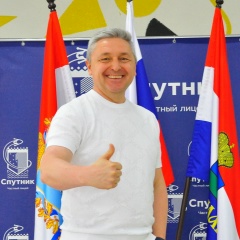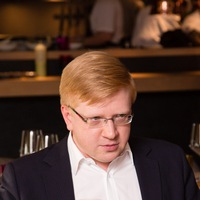Хочется в качестве идеолога "Том Сойер Феста" обратиться к академическому сообществу.
С самого начала, когда мы примерно в это время четыре года назад рождали в муках (на самом деле фантазировали с горящими глазами) концепт фестиваля, меня больше всего интересовали не начало и конец покраски трёх домов в Самаре на улице Льва Толстого. И не последующие отзывы "вот вы молодцы" или "вот вы облажались" в зависимости от результата (потому что исход дела был абсолютно неочевиден). А лично меня заботил ответ на вопрос: "Что будет, если мы кинем клич о помощи и покажем как можно большей аудитории то, как может быть красива средовая историческая застройка российских городов, если заботиться о ней даже совсем небольшими силами?"
Целью "Том Сойер Феста" для меня был эксперимент. Разумеется, я надеялся, что итогом эксперимента станет гуманизация отношения горожан (включая представителей бизнеса и власти) к этим доведённым до ужасного состояния прекрасным и сложным фактурам городской ткани, открытие её новыми методами более широким кругам общества. Но что именно получится в итоге, кроме трёх обновлённых фасадов на улице Льва Толстого, известно не было. В итоге я получил немало разочарований, но вдохновляющих открытий было гораздо больше.
Эксперимент растянулся и разросся до совершенно невообразимых на его старте масштабов. На данный момент только в его реализации приняло участие уже несколько тысяч человек в нескольких десятках городов страны (за что им огромное сердечное спасибо). А аудитория, наблюдающая за ним постоянно, превосходит это количество в разы, если не в десятки раз. С каждым годом эксперимент всё усложняется, накапливается огромное количество новых данных. И всё это требует анализа и исследований, на которые у нас самих не хватает сил, времени и компетенций.
Может быть есть учёные, которым интересно подключиться к исследованию фестиваля и его эффектов? Социологи, урбанисты, культурологи, психологи, экономисты, специалисты по медиа (тут тоже немалое поле для изучения), способные помочь нам самим внести ясность в промежуточные результаты (мы пока не собираемся останавливаться) эксперимента под названием "Том Сойер Фест". История перспективная. Ведь фестиваль каждый год всё усложняется и приносит всё новые плоды и технологии. Мне кажется, эти данные введённые в академический оборот могли бы быть действительно полезными для общества.
А ещё мы очень много узнали о том, как социально устроена историческая среда. Ведь мы в течение месяцев каждое лето наблюдаем за тем, как строятся сценарии её жителей в разных городах, слушаем о чём они мечтают и как рассуждают. Нами накоплено очень много контактов людей, которые хотят и дальше жить в исторических зданиях и готовы в разной степени бороться за это право, несмотря на сопряжённые с этим сложности.
В общем, пациент мечтает о вскрытии. Если у кого-то появится желание научно покопаться в нас, знайте о том, что я буду за это благодарен.
С самого начала, когда мы примерно в это время четыре года назад рождали в муках (на самом деле фантазировали с горящими глазами) концепт фестиваля, меня больше всего интересовали не начало и конец покраски трёх домов в Самаре на улице Льва Толстого. И не последующие отзывы "вот вы молодцы" или "вот вы облажались" в зависимости от результата (потому что исход дела был абсолютно неочевиден). А лично меня заботил ответ на вопрос: "Что будет, если мы кинем клич о помощи и покажем как можно большей аудитории то, как может быть красива средовая историческая застройка российских городов, если заботиться о ней даже совсем небольшими силами?"
Целью "Том Сойер Феста" для меня был эксперимент. Разумеется, я надеялся, что итогом эксперимента станет гуманизация отношения горожан (включая представителей бизнеса и власти) к этим доведённым до ужасного состояния прекрасным и сложным фактурам городской ткани, открытие её новыми методами более широким кругам общества. Но что именно получится в итоге, кроме трёх обновлённых фасадов на улице Льва Толстого, известно не было. В итоге я получил немало разочарований, но вдохновляющих открытий было гораздо больше.
Эксперимент растянулся и разросся до совершенно невообразимых на его старте масштабов. На данный момент только в его реализации приняло участие уже несколько тысяч человек в нескольких десятках городов страны (за что им огромное сердечное спасибо). А аудитория, наблюдающая за ним постоянно, превосходит это количество в разы, если не в десятки раз. С каждым годом эксперимент всё усложняется, накапливается огромное количество новых данных. И всё это требует анализа и исследований, на которые у нас самих не хватает сил, времени и компетенций.
Может быть есть учёные, которым интересно подключиться к исследованию фестиваля и его эффектов? Социологи, урбанисты, культурологи, психологи, экономисты, специалисты по медиа (тут тоже немалое поле для изучения), способные помочь нам самим внести ясность в промежуточные результаты (мы пока не собираемся останавливаться) эксперимента под названием "Том Сойер Фест". История перспективная. Ведь фестиваль каждый год всё усложняется и приносит всё новые плоды и технологии. Мне кажется, эти данные введённые в академический оборот могли бы быть действительно полезными для общества.
А ещё мы очень много узнали о том, как социально устроена историческая среда. Ведь мы в течение месяцев каждое лето наблюдаем за тем, как строятся сценарии её жителей в разных городах, слушаем о чём они мечтают и как рассуждают. Нами накоплено очень много контактов людей, которые хотят и дальше жить в исторических зданиях и готовы в разной степени бороться за это право, несмотря на сопряжённые с этим сложности.
В общем, пациент мечтает о вскрытии. Если у кого-то появится желание научно покопаться в нас, знайте о том, что я буду за это благодарен.
I would like to address the academic community as the ideologist of Tom Sawyer Fest.
From the very beginning, when at about this time four years ago, we were giving birth in agony (in fact, fantasizing with burning eyes) the concept of the festival, I was most interested not in the beginning and end of painting three houses in Samara on Lev Tolstoy Street. And not follow-up reviews "here you are great" or "here you screwed up" depending on the result (because the outcome of the case was completely unclear). And personally I was worried about the answer to the question: "What will happen if we throw a cry for help and show to the largest possible audience how beautiful the environmental historical buildings of Russian cities can be, if we take care of it even with very small forces?"
The goal of Tom Sawyer Fest was an experiment for me. Of course, I hoped that the result of the experiment would be the humanization of the attitude of citizens (including business and government representatives) to these beautiful and complex textures of urban fabric brought to a terrible state, opening it up with new methods to wider circles of society. But what exactly would turn out in the end, except for three renewed facades on Lev Tolstoy Street, was not known. In the end, I got a lot of disappointments, but there were much more inspiring discoveries.
The experiment stretched out and grew to a scale absolutely unimaginable at its start. At the moment, several thousand people in several dozen cities of the country have already taken part in its implementation (for which many heartfelt thanks to them). And the audience watching him constantly exceeds this number by times, if not tens of times. Every year the experiment becomes more complicated, a huge amount of new data accumulates. And all this requires analysis and research, for which we ourselves do not have enough energy, time and competence.
Maybe there are scientists who are interested in joining the study of the festival and its effects? Sociologists, urbanists, cultural scientists, psychologists, economists, media specialists (there is also a considerable field for study here), who can help us clarify the intermediate results (we are not going to stop for now) of the experiment called "Tom Sawyer Fest". The history is promising. After all, the festival every year becomes more complicated and brings new fruits and technologies. It seems to me that these data introduced into academic circulation could be really useful for society.
We also learned a lot about the social structure of the historical environment. After all, for months every summer we observe how the scenarios of its inhabitants in different cities are being built, we listen to what they dream about and how they reason. We have accumulated a lot of contacts of people who want to continue living in historical buildings and are ready to fight for this right to varying degrees, despite the difficulties associated with this.
In general, the patient dreams of an autopsy. If someone has a desire to delve into us scientifically, know that I will be grateful for it.
From the very beginning, when at about this time four years ago, we were giving birth in agony (in fact, fantasizing with burning eyes) the concept of the festival, I was most interested not in the beginning and end of painting three houses in Samara on Lev Tolstoy Street. And not follow-up reviews "here you are great" or "here you screwed up" depending on the result (because the outcome of the case was completely unclear). And personally I was worried about the answer to the question: "What will happen if we throw a cry for help and show to the largest possible audience how beautiful the environmental historical buildings of Russian cities can be, if we take care of it even with very small forces?"
The goal of Tom Sawyer Fest was an experiment for me. Of course, I hoped that the result of the experiment would be the humanization of the attitude of citizens (including business and government representatives) to these beautiful and complex textures of urban fabric brought to a terrible state, opening it up with new methods to wider circles of society. But what exactly would turn out in the end, except for three renewed facades on Lev Tolstoy Street, was not known. In the end, I got a lot of disappointments, but there were much more inspiring discoveries.
The experiment stretched out and grew to a scale absolutely unimaginable at its start. At the moment, several thousand people in several dozen cities of the country have already taken part in its implementation (for which many heartfelt thanks to them). And the audience watching him constantly exceeds this number by times, if not tens of times. Every year the experiment becomes more complicated, a huge amount of new data accumulates. And all this requires analysis and research, for which we ourselves do not have enough energy, time and competence.
Maybe there are scientists who are interested in joining the study of the festival and its effects? Sociologists, urbanists, cultural scientists, psychologists, economists, media specialists (there is also a considerable field for study here), who can help us clarify the intermediate results (we are not going to stop for now) of the experiment called "Tom Sawyer Fest". The history is promising. After all, the festival every year becomes more complicated and brings new fruits and technologies. It seems to me that these data introduced into academic circulation could be really useful for society.
We also learned a lot about the social structure of the historical environment. After all, for months every summer we observe how the scenarios of its inhabitants in different cities are being built, we listen to what they dream about and how they reason. We have accumulated a lot of contacts of people who want to continue living in historical buildings and are ready to fight for this right to varying degrees, despite the difficulties associated with this.
In general, the patient dreams of an autopsy. If someone has a desire to delve into us scientifically, know that I will be grateful for it.
У записи 128 лайков,
21 репостов,
4697 просмотров.
21 репостов,
4697 просмотров.
Эту запись оставил(а) на своей стене Андрей Кочетков






































































